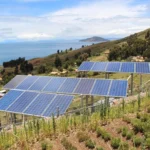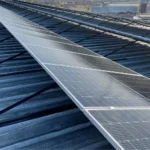UPNEDA Solar Subsidy 2025: How to Maximize Savings on Rooftop Solar
UPNEDA Solar Subsidy 2025: How to Maximize Savings on Rooftop Solar
Switching to solar power has always been considered a smart move for households. But in a state like Uttar Pradesh, where the demand for electricity is growing rapidly, solar is not just smart, it’s becoming a necessity. To make solar more affordable and appealing, the Uttar Pradesh New & Renewable Energy Development Agency (UPNEDA) is providing state-level subsidies on top of the Central Government subsidy.
This dual support significantly reduces the upfront cost of rooftop solar installations. Instead of spending lakhs at once, families can now cut down their investment by almost half. That means faster savings, shorter payback periods, and cleaner energy at home.
In this blog, we’ll break down what the UPNEDA subsidy is, how much you can save per kW, who can apply, and how you can make the most of it. If you are planning to install solar in UP in 2025, this is your complete guide.
What is UPNEDA Subsidy?
UPNEDA is the state body that looks after renewable energy programs in Uttar Pradesh. Its main goal is to encourage the use of clean energy and reduce dependence on coal-based power. To achieve this, it provides financial support in the form of subsidies to homeowners who install rooftop solar.
The subsidy works in coordination with the PM Surya Ghar: Muft Bijli Yojana, which is the central government’s scheme. So, a consumer in UP actually enjoys double benefits — one from the Centre and one from the State.
This makes solar more attractive than ever before. For example, a 3 kW rooftop solar system, which normally costs about ₹1.8 lakh, will cost you only about ₹70,000–₹80,000 after subsidies. That’s a massive cut, making solar accessible for middle-class families too.
Central + State Subsidy for Solar in UP (2025)
Here’s a detailed breakdown of how the subsidies combine:
System Capacity (kW) | Central Govt. Subsidy (₹) | UPNEDA State Subsidy (₹) | Total Subsidy (₹) | Effective Subsidy per kW (₹) |
1 kW | ₹30,000 | ₹15,000 | ₹45,000 | ₹45,000 per kW |
2kW | ₹60,000 | ₹25,000 | ₹85,000 | ₹42,500 per kW |
3kW | ₹78,000 | ₹30,000 | ₹1,08,000 | ₹36,000 per kW |
4kW | ₹78,000 | ₹40,000 | ₹1,18,000 | ₹29,500 per kW |
5kW | ₹78,000 | ₹50,000 | ₹1,28,000 | ₹25,600 per kW |
Above 5 kW (up to 10 kW) | ₹78,000 (fixed) | ₹50,000 (capped) | ₹1,28,000 | Varies, reduces per kW |
The subsidy is most rewarding for 1-3 kW systems, which are common for households. Larger systems (above 5 kW) get capped subsidies, so the benefit per kW reduces.
Why UPNEDA Subsidy is a Game-Changer
The UPNEDA subsidy is not just about cost reduction. It’s about changing how people think about electricity. Let’s look at why this is a big deal:
1. Lower Upfront Costs
Solar used to feel like a big investment, out of reach for many. With UPNEDA + central subsidy, families save up to 60% on installation costs.
2. Faster Payback
Normally, it takes 6-7 years to recover your investment in solar. With a subsidy, the payback period comes down to just 2-4 years, depending on usage.
3. Monthly Savings
Even a small 3 kW system can save ₹3,500-₹4,000 per month in electricity bills. That’s about ₹40,000-₹50,000 saved annually.
4. Green Future
More rooftop solar means less pollution, less coal burning, and cleaner air for Uttar Pradesh.
Eligibility for UPNEDA Solar Subsidy
Not everyone can apply for this subsidy. To make sure it goes to the right consumers, there are some rules:
- The applicant must be a resident of Uttar Pradesh.
- The solar system should be installed by an empanelled vendor approved by MNRE/UPNEDA.
- Only residential rooftop systems are eligible (C&I users are not included).
- The system must be grid-connected with net metering.
- A household can apply for only one subsidy per home.
This ensures that subsidies are used fairly and encourages genuine adoption of solar among households.
Example: Cost Breakdown for a 3 kW System in UP
Let’s look at an actual example to understand better:
- Gross cost of 3 kW system = ₹1,80,000
- Central subsidy = ₹78,000
- UPNEDA subsidy = ₹30,000
- Total subsidy = ₹1,08,000
- Net cost to consumer = ₹72,000
Now, this 3 kW system can generate around 360-400 units of electricity per month. At an average tariff of ₹9 per unit, that’s about ₹3,200-₹3,600 savings every month.
This means in just 2 years, you recover your investment. After that, the electricity you generate is practically free for the next 20+ years!
Why Now is the Best Time to Go Solar in UP
Many consumers delay going solar, thinking prices will drop further. But the truth is, with subsidies like UPNEDA, the prices are already at their lowest point.
- Subsidy schemes are time-bound and may not be available forever.
- Electricity bills are only rising year after year.
- Payback periods are already very short with current subsidies.
That’s why 2025 is the best time for UP households to make the switch.
Switch to Solar with Smart Roof Solar
The UPNEDA subsidy, combined with the Central subsidy, has made rooftop solar highly affordable for families across Uttar Pradesh. From lower upfront costs to faster payback, the benefits are massive. A system that once seemed out of budget can now be installed at a fraction of the cost.
At Smart Roof Solar, we make this process even easier by guiding you through:
- Choosing the right solar system size.
- Handling vendor coordination.
- Ensuring your subsidy application is approved without delays.
- Providing complete installation and after-sales support.
FAQs
Q1. Can industries or commercial buildings apply for UPNEDA subsidy?
Ans: No, it is strictly for residential consumers.
Q2. How much subsidy can I get on a 5 kW rooftop system?
Ans: Up to ₹1.28 lakh.
Q3. How is the subsidy credited?
Ans: Directly into your bank account after inspection and approval.
Q4. Can I apply without a vendor?
Ans: No, only empanelled vendors under MNRE/UPNEDA are allowed.
Q5. Is there a maximum limit for the subsidy?
Ans: Yes, up to 10 kW per household.
Suggested Articles

Solar Panel Efficiency and Temperature: What You Need to Know
The stronger the sun, the higher the temperature and more energy your solar panels produce, right? No.

Net Metering and Its Advantages Explained: How Solar Users Save More on Energy Bills
Learn what Net Metering and its advantages mean for you—cut electricity costs, earn energy credits, and boost solar efficiency easily.

Delhi charges one of the highest tariffs for commercial load and industrial – average over Rs 10.00 per kWh
Delhi imposes some of the highest electricity tariffs for commercial and industrial consumers, averaging over ₹10 per kWh, impacting businesses and operating costs

Solar String Sizing Check: Did Your Installer Get It Right?
Worried your rooftop solar strings might be sized incorrectly? Check these tips to ensure your Solar PV system is installed for maximum efficiency and safety

Save on Electricity in Haryana Using Net Metering: A Complete Guide
Learn how to save on electricity in Haryana with net metering. Step-by-step guide on benefits, installation, and cost savings for your home or business

Industrial Solar Plants with Diesel Generator Backup: What You Need to Know
Discover how industries can efficiently run rooftop solar plants alongside diesel generators (DG). Learn the benefits, setup tips, and hybrid system strategies to ensure uninterrupted power and maximize energy savings.

Understanding Solar Cells and Modules: A Complete Guide
Understand solar cells and modules, their functioning, and advantages for residential and commercial solar installations.

Capex vs Opex Solar Model: Which is Better for Your Energy Needs?
Solar energy systems are becoming increasingly popular in homes and businesses around the world. With rising electricity costs, solar energy provides an attractive alternative to traditional energy sources.